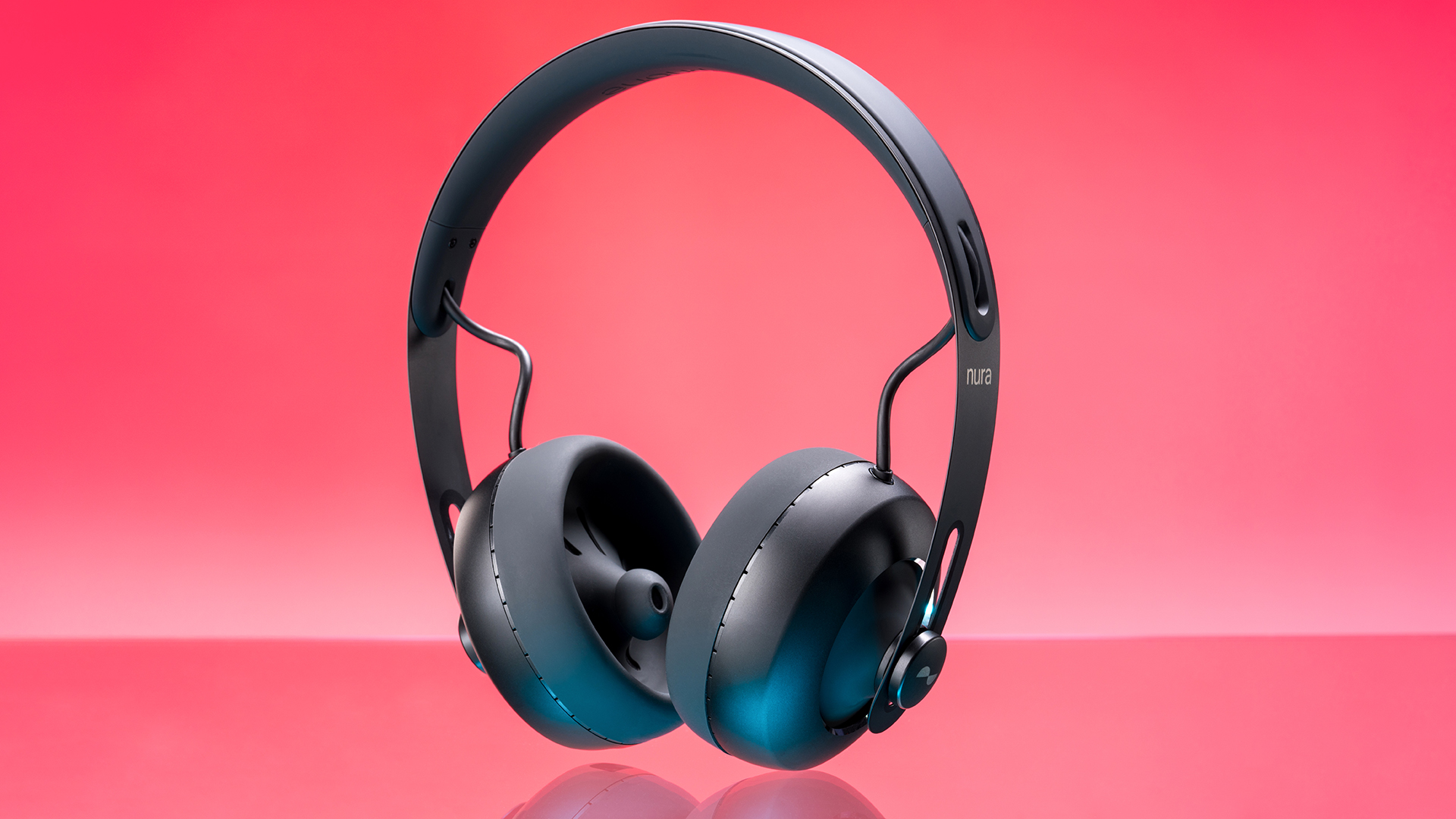
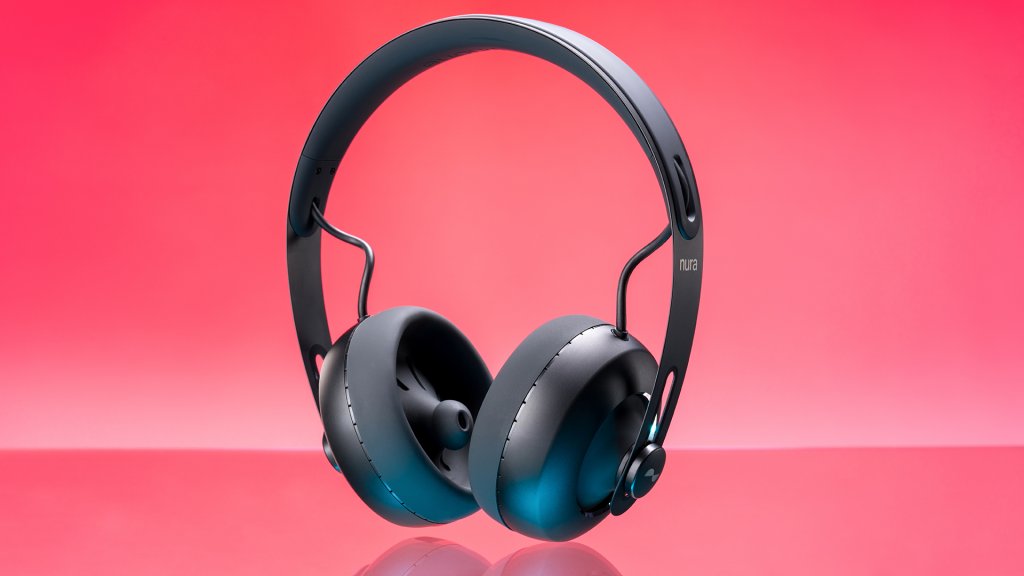
“Change the way you listen.” Assorted variations of this cliche are thrown around ad nauseam by scores of audio tech manufacturers when promoting their latest listening devices. Something you never see, however, is a company promising a pair of headphones that changes itself to the way you already listen — never, that is, until now.
Buoyed by a cash infusion of over $1.9 million from their massively successful Indiegogo campaign, and over $1.8 million from an equally lucrative Kickstarter round of funding, Australian audio startup Nura set to work on crafting an innovative pair of adaptive headphones. The result is the Nuraphone, a pair of headphones capable of creating a customized listening experience for every individual user. As a music junkie with a bit of an audiophile streak, I was thrilled by the opportunity to check out the Nuraphones and see if they could possibly live up to their manufacturer’s lofty claims of a unique listening experience.
Getting to Know the Nuraphone
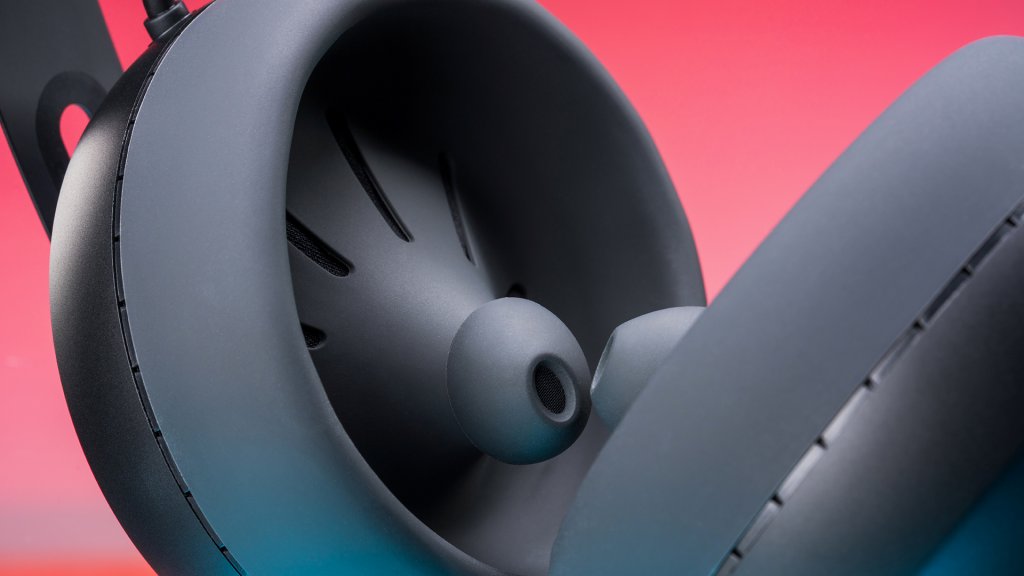
Looking behind the ear cups gives you the first indication that the Nuraphone isn’t your typical pair of headphones. Within each cup is a protruding bud for placing inside your ear. Nura dubs this hybrid in- and over-ear architecture “Inova,” a cute portmanteau of “in” and “over.” There are a few key benefits of this design approach. For one, the Inova architecture offers dual-layer noise isolation — the ear cups keep noise from getting in, while the in-ear pieces keep sound from leaking out. It also keeps ambient noise out when measuring a user’s hearing and creating their custom sound profile; more on that later.
More important to the audiophiles out there are the effects this design has on sound quality, as the Inova architecture delivers deep bass through the ear cup while preserving clear tones through the earbuds, immersing you in the listening experience without introducing muddy distortion. Whatever the case, the hybrid architectural design results in an aesthetic that makes the Nuraphones look somewhat like a piece of auditory testing equipment. Which, it turns out, isn’t far off…
That brings us to the true innovation of the Nuraphones: its ability to tune itself to your hearing. Nura embedded sophisticated technology within their headphones to accurately measure and adapt to each users’ hearing. When a new user sets up their Nuraphones, these technologies come together in what can be boiled down to a four step process. First, the Nuraphone plays a range of tones into the user’s ear. Then, the tones vibrate their inner ear, which produces a tiny sound known as an otoacoustic emission. This sound is extremely quiet, but capable of being measured by a microphone inside the ear canal. That brings us to step three of the sound personalization process: the sensitive microphones inside the Nuraphone detect the returning otoacoustic emission, which contains information on how well the user heard the tones that went into their ear. Finally, the Nuraphone uses its embedded self-learning engine to create a hearing profile for the user, crafting the music and sound played through the headphones to match that particular user’s unique hearing.
Nura didn’t stop with innovative audio tech; they also put great care into making the Nuraphone easy to connect to devices. Upon putting on the headphones, the device automatically enters a discoverable mode for two minutes, making for simple pairing, as well as allowing you to swap between paired devices without needing to disconnect — a feature Nura terms “Bluetooth QuickSwitch.” In practice it’s just as seamless as described, and fast to connect too. You even have the option to connect to non-Bluetooth-enabled devices with the included stereo audio cable.
If you want to tune out everything but your music, then you can turn to the Nuraphone’s Active Noise Cancellation (ANC), a feature that worked so well in my office environment that I could barely hear anything around me, even the usual cacophony of clacking mechanical keyboards. Ironically enough, this meant the Nuraphone made writing its own article much easier. Even better was when I used them at home to drown out the din of the loud Hollywood partiers that tend to come parading past my window at some late hour each night. Drowning out the midnight revelers was as easy as putting on the headphones and playing some soft ambient music. In case you don’t want to block out all the sound around you, engaging “Social Mode” — either through the Nura app or via a button press on one of the Nuraphones’ two capacitive buttons — will switch off the ANC so you can still listen to your music without tuning out ambient noise.
A capacitive button rests on each ear cup for controlling various functions that can be programmed through the app. You can map a function to a tap and double tap for each side, for a total of four mappable functions. I opted to use the buttons for skipping tracks, pausing and resuming the music, and toggling the “Social Mode” on and off. The button controls were accessible and responsive, though I sometimes forgot about them and accidentally skipped tracks or paused my music when I would adjust headset, as even brushing against one of the buttons can register as a button press. Luckily, you can opt to forego mapping any controls to the buttons if you feel they’ll introduce too many issues to your listening experience.
By Nura’s estimate, the Nuraphones offer a battery life upwards of 20 hours. Each time you power on the headphones, a voice greets you and informs you of the current charge percentage. In my experience, it’s tough to get a pinpoint reading on how much battery you have left based on these percentages — I only ever got quotes in ten percent increments, meaning it could drop from 60%-50% in a short time, since the estimates round up to the nearest percentage. That would sting a lot more if the Nuraphones didn’t have an impressive battery performance, but fortunately for Nura and their customers, the headphones seemed to run even longer than the most optimistic manufacturer estimate. Like most wireless headphones, the Nuraphones include a USB charging cable for when the juice finally runs out.
Tuning in with the Nura App
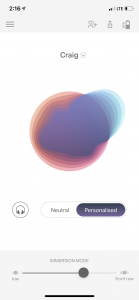 Unlocking the potential of the Nuraphone is easy thanks to the Nura app. The app takes you through the setup process, initiating the sound calibration. This results in what the company dubs your “Hearing Profile,” which is visually represented as a colored shape set against a circle. This is designed to be read as a diagram in which the 12 o’clock position represents the lowest tones on the scale, with the tones getting higher pitched as you move clockwise. The further your colored shape stretches outward, the more sensitive you are to the corresponding frequency. In my personal example, pictured to the right, you can see that my shape stretches outward from roughly the 1 o’clock to 3 o’clock positions, meaning that I’m particularly sensitive to low notes. Your Hearing Profile is stored with the actual Nuraphones, meaning you can connect them to other devices without having to reconfigure or forego your personalized audio calibrations.
Unlocking the potential of the Nuraphone is easy thanks to the Nura app. The app takes you through the setup process, initiating the sound calibration. This results in what the company dubs your “Hearing Profile,” which is visually represented as a colored shape set against a circle. This is designed to be read as a diagram in which the 12 o’clock position represents the lowest tones on the scale, with the tones getting higher pitched as you move clockwise. The further your colored shape stretches outward, the more sensitive you are to the corresponding frequency. In my personal example, pictured to the right, you can see that my shape stretches outward from roughly the 1 o’clock to 3 o’clock positions, meaning that I’m particularly sensitive to low notes. Your Hearing Profile is stored with the actual Nuraphones, meaning you can connect them to other devices without having to reconfigure or forego your personalized audio calibrations.
The Nura app features an “Immersion” slider that lets you adjust how much your music sounds like a live performance. In practice, the biggest difference in the sound I could perceive was the bass getting heavier as I moved the Immersion slider up. But that’s not to say the effect isn’t impressive; the Nuraphone outputs heavy bass without even a hint of distortion at the highest Immersion setting. And I don’t use the word “heavy” lightly — at the peak Immersion level, the Nuraphone’s bass put even something like Beats headphones to shame, the major difference being that the Nuraphone doesn’t lean on its booming sound as a crutch. It’s just one part of a rich sonic package.
A Question of Comfort
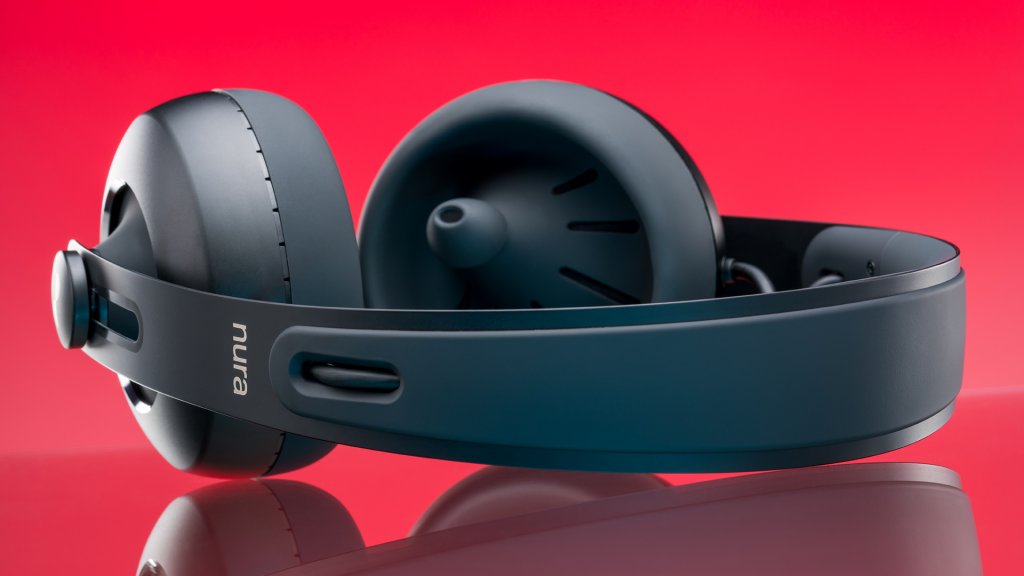
When I showed the Nuraphone off to my colleagues, a lot of them — viewing the earbuds extending from each cup — expressed doubts about the comfort of the headphones; admittedly, I did too when I first unboxed them. Putting the headphones on for the first time is an odd feeling, no doubt about it; it can feel like your ears are being probed in a way you don’t feel from most earbuds. That likely comes down to the fact that you can’t do much in the way of adjusting how far the Nuraphone goes into your ears (though Nura does include a few interchangeable ear tips of different sizes for some comfort customization). There’s no denying the fact that wearing the Nuraphone takes some getting used to. After a few listening sessions though, you become acclimated to the feel of the Inova design, and it begins to feel more like wearing any other set of over-ear headphones. That being said, I would have appreciated being able to adjust the length and position of the inside earbuds a bit, as there were a few occasions when I needed to shift the headset around my head until I felt comfortable. Still, I spent multiple working days wearing the Nuraphone for almost my entire shift, and I didn’t experience any ear pain.
As for build quality, the Nuraphone feels sturdy — its Japanese steel headband and aluminum cup frames give the impression that you’d have to go out of your way to break them. It’s a premium build that perfectly compliments the premium sound. To further enhance comfort, Nura designed a cooling system dubbed “TeslaFlow,” in which Tesla valves (a valve originally created by Nikola Tesla to allow air or fluid to flow in one direction with no moving parts) pull cool air in through the top of the ear cups and push hot air through the bottom, maintaining cool comfort while you listen.
Listen Up: Nuraphone Audio Quality
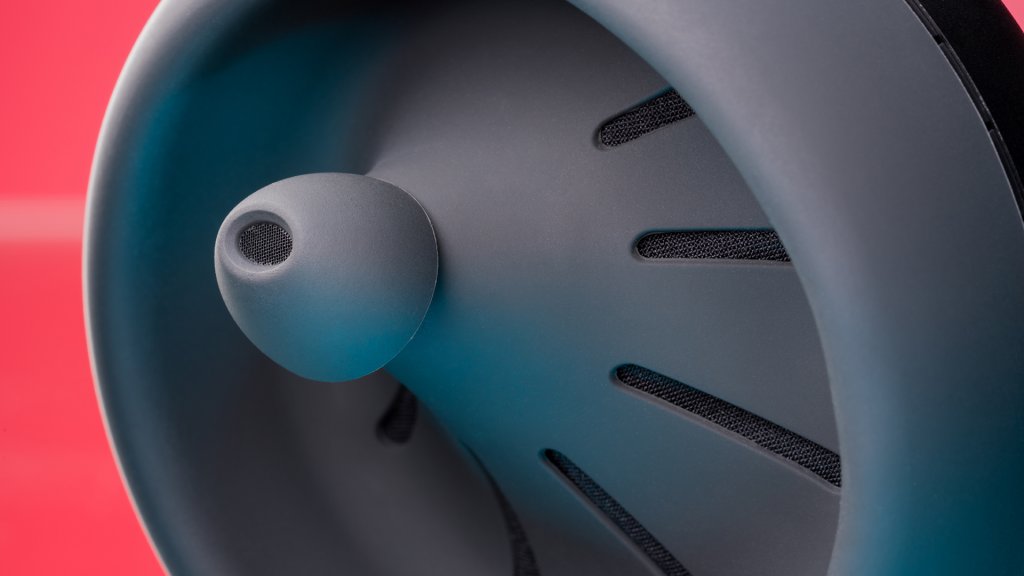
I’ve encountered enough snake oil over the years (room-tuning crystals, “ambient field conditioners,” etc.), that I’ve developed a healthy skepticism when it comes to audio products that make bold proclamations about changing the way we listen. So when Nura claimed that their headphones could uniquely tune themselves to a user’s hearing, I naturally raised an eyebrow. After testing the Nuraphones out, however, consider me a believer.
In a way, it’s tough to describe the overall sound of Nuraphones, since they’re tailored to meet your unique hearing. But a few aspects should hold true for all listeners. For one, I encountered no discernible distortion even at high volume. The bass produced by the ear cups was powerful, while the earbuds chimed out pristine treble and midrange. Thanks to the Inova design, cranking up the Immersion, and therefore the bass, to its maximum setting doesn’t hurt your ears, since the sound hits your earlobe instead of the eardrum. That’s also what lends the Nuraphone its Immersion factor, since it replicates the way music hits your ears at a concert. In practice, it makes for a rich stereo soundstage that adds more color to your music.
With any headphones, it’s good to listen to a diverse genre lineup of music before making a final evaluation of their sound quality. A headset that makes you feel like you’re standing next to a stage subwoofer at a Kendrick Lamar show may not be up to snuff when it comes to playing Dad’s Steely Dan records. So when I tested the Nuraphones, I made sure to cover a wide swath of music to see how well they could cover the needs of just about any listener.
As a self-professed audiophile (albeit one that doesn’t blow thousands of dollars on equipment), I have a few pieces of music that I turn to when it comes to testing out new sound equipment. Immediately after calibrating my Nuraphone, I popped on “Money for Nothing” by Dire Straits. Proclivity for Dad Rock aside, my reason for this choice is the song’s reputation as a superbly engineered recording (and it has the Grammys to show for it). By testing audio products with well-engineered recordings, it’s easier to pinpoint weakness of the equipment as opposed to flaws in the recording; for example, a poorly engineered song may be heavy on distortion, making it difficult to determine if the issues lie in the recording or your equipment.
With that explanation out of the way, I can say that the Nuraphone made a stellar impression from the get-go. The crunch of the finger-picked electric guitar, the heavy thumping of the reverb-soaked drums on the intro; all the pieces came together in a rich sonic package. I can also say the Nuraphone trounced the sound of even my best pair of headphones, the Sennheiser HD 598. Over the course of my time with the Nuraphone, I would listen to countless other albums, excitedly re-discovering some of my favorites, experiencing them again with the rich sound profile created by Nura. To paint a broader picture of the auditory potential of the Nuraphone, I came away just as impressed from my time listening to hip-hop; I made a point of listening to songs with the heaviest bass I could think of, and was blown away each time. The most impressive moment in my tests was listening to “I Luv U,” by UK grime artist Dizzee Rascal, a song with ludicrously blown out bass that makes subwoofers work overtime. But the Nuraphone handled it with aplomb, blanketing me in the pounding beat at the top Immersion level.
As if the unique sound calibration wasn’t enough on its own, the Nuraphone’s other features go a long way in rounding out the package. Working together in concert, the Active Noise Cancellation and custom sound profiles make for a startlingly personal listening experience. Laying in bed and drifting off to the soft angelic sounds of Brian Eno’s “Ambient 1“ was a borderline transcendent experience and the personal highlight of my time testing the Nuraphone.
The Nuraphone isn’t just good for music — listening to podcasts and watching videos with the headphones were great experiences too. Dialogue was crisp and clear, even in movies with loud music and sound effects. Turning up the Immersion setting delivered deep rumbling bass without overwhelming the soundscape. If listening to music with a pair of Nuraphones is like being at a concert, then watching videos is like sitting in a movie theater — you get to enjoy thunderous bass that doesn’t hurt your ears, while getting the nuances of the audio through the earbuds. And thanks to the TeslaFlow cooling, I could watch a whole movie in complete comfort.
Buy the Nuraphone Wireless Bluetooth Over-the-Ear Headphones – $399.99
Are the Nuraphone’s “Sound Profiles” for Real?
So the Nuraphones sound fantastic, I think I’ve made that pretty clear by now. But is the concept of a unique hearing profile for real? After all, who’s to say that Nura didn’t just make a nice pair of headphones? Was I really hearing music in a way that was tailored for me? To find out, I set up a little controlled experiment: I had a couple friends and coworkers try out the Nuraphone and set up their own profiles (thank goodness for the included interchangeable ear tips). Sure enough, their unique profiles — which they both attested to sounding excellent — sounded dreadful to me. On the flip side, each of my colleagues attested to the fact that my sound profile sounded hollow and tinny to them. The only conclusion I can take away from this little controlled experiment is that Nura absolutely means what they say: they really have created a pair of headphones that can adapt to any listener.
You Need to Hear This
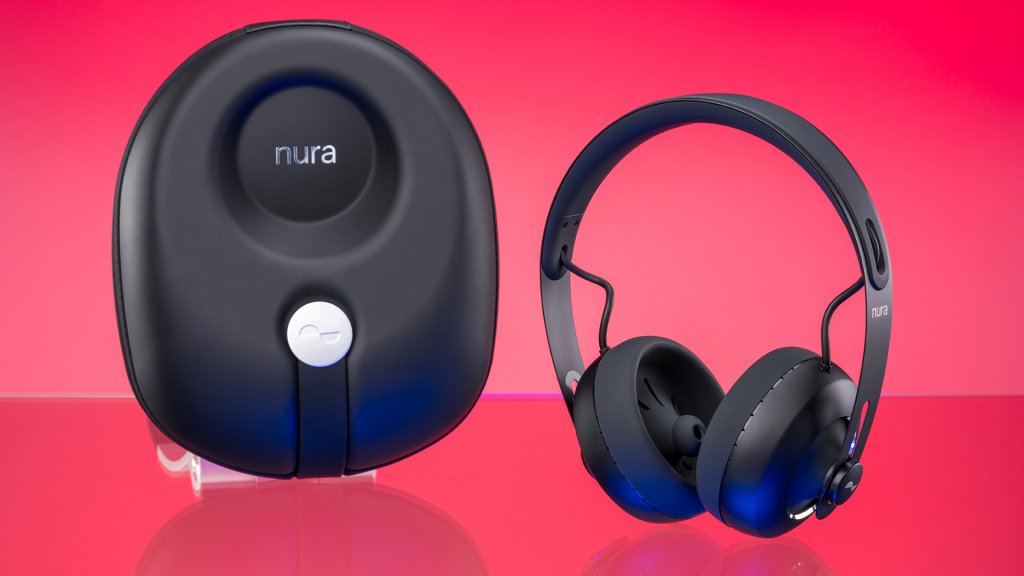
An old business adage commands salesmen to “underpromise and overdeliver.” On the surface, it seems like Nura ignored this advice completely, promising a fundamental change in the way we interact with our listening devices. But after even a short time with the Nuraphone, it became clear that these headphones are not a classical case of an average product dressed up with flowery language, but rather a confident and innovative offering from a company poised to become a major player in the audio space. The Nuraphone is one of those rare products that purports to offer an almost magical experience and then manages to follow through on its promises. With some minor adjustments to the comfort for the inevitable next generation of Nuraphone, I’ll have no hesitation in making these my go-to headphones for a long time to come.
Featured in this article:
Nuraphone Wireless Bluetooth Over-the-Ear Headphones with 20hr Battery Life- $399.99
Note, all prices and products are accurate at the time of article publication, although some may have changed or are no longer available.

